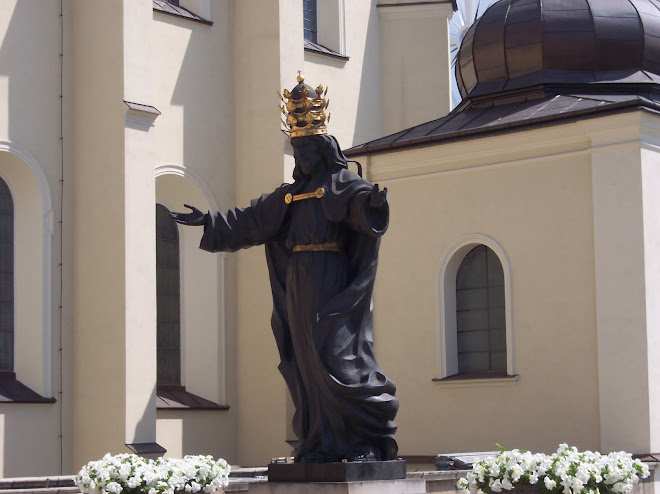You get on a bus in Elbląg at 9 o'clock in the evening, and travel for 11 hours without a break through north-eastern Poland, to arrive at the Vilnius bus-station at 7 in the morning.
The bus is old, Russian, cramped, packed, and without seat belts, equipped with a malodorous lavatory, and never reaches a speed above the legal maximum of 54 miles per hour. There are fewer seats than tickets sold, so one young man has to travel for 11 hours in the windowless sleeping compartment, intended for the driver, which is below the passengers.
Yet every year about half a million Poles travel, as I did last weekend as a pseudo-Pole, on a pilgrimage to the Church of Our Lady at the Gate of Dawn (Ostra Brama) in Vilnius, Lithuania. Vilnius was originally in Poland, and the Church is very Polish, and the focus of many pilgrimages.
The Gate itself is a beautiful piece of Baroque, and the painting of the Blessed Virgin can just be made out below, seen through the window over the arch:
Our Lady of the gate of dawn in detail (photo - Wikipedia):
Also on the pilgrims' list are the Polish cemetary where the dead of the Polish-Soviet War are buried:
The heart of General Piłsudski is also buried there:
A better picture. The incomplete lines at the bottom of the picture are from Juliusz Słowacki (1809-1849) who lived in Vilnius. I am trying to find the complete poem.
The Cathedral of Ss. Peter and Paul is very beautiful:
It has a remarkable hanging metal sculpture of the Barque of Saint Peter:
There are many more holy places to visit and pray at.
The pilgrimage is well worth the horrible journey.












































